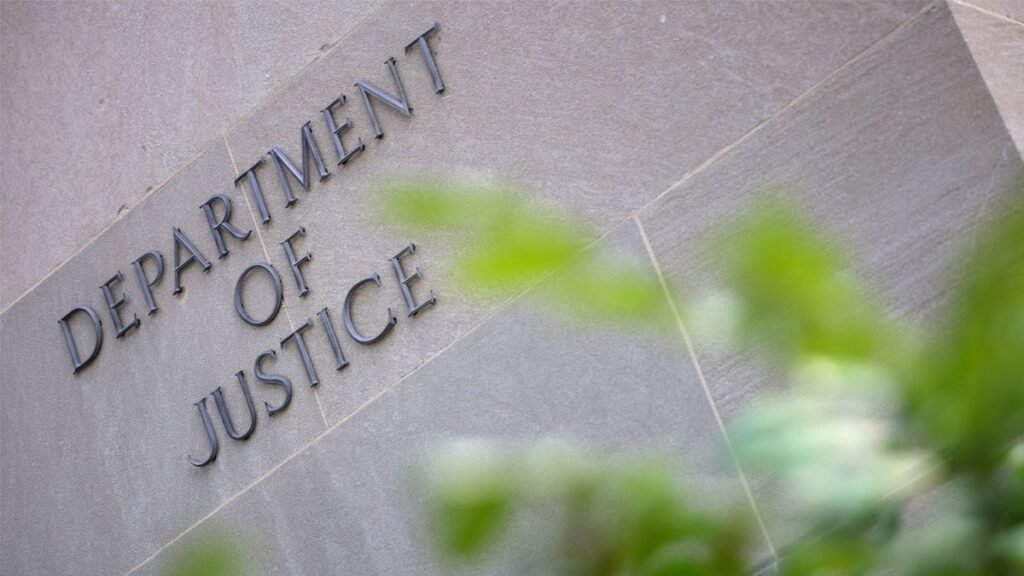United States President Donald Trump will host the heads of five Central Asian countries – Uzbekistan, Kazakhstan, Kyrgyzstan, Tajikistan and Turkmenistan – in an annual summit in Washington, DC, on Thursday. The group, founded in 2015, is known as C5+1, which refers to the five Central Asian countries and the US.
According to the US Department of State, the forum aims to increase cooperation between Washington and the Central Asian countries to “advance regional solutions to global challenges” through “fair and reciprocal economic partnerships, increased energy security, and promoting peace through strength”.
Recommended Stories
list of 3 itemsend of list
“C5+1 working groups support three pillars of engagement: economy, energy, and security,” it added.
But Thursday’s meeting with the heads of former Soviet republics comes as both Russia and China look to secure their own trade deals in the region.
Shairbek Dzhuraev, president of Crossroads Central Asia, an independent research institute, told Al Jazeera that he expects trade agreements to be discussed on Thursday, especially those involving “critical mineral resources”.
Here’s what we know about the summit:
What is the C5+1?
The forum was established in 2015 at its first meeting in Samarkand, Uzbekistan, when the foreign ministers of the six countries pledged to deepen cooperation over trade, transport, energy and communications.
Talks were also used to discuss security concerns relating to the war in Afghanistan before the US pulled out in 2021.
In 2023, then-US President Joe Biden held a meeting with Central Asian leaders on the sidelines of the United Nations General Assembly for the first time as well, marking a significant shift in US focus to the region.
According to a statement issued by Kazakh President Kassym-Jomart Tokayev, the discussion between the two leaders in 2023 addressed “strengthening cooperation to address security challenges, including threats such as cybersecurity, terrorism, extremism, illegal migration and drug trafficking”.
Biden hailed the inaugural meeting of the leaders as a “historic moment” and claimed the countries were building on years of “close cooperation”. “A cooperation that is grounded in our shared commitment to sovereignty, independence, territorial integrity,” he said.
What trade deals have been agreed by the US in Central Asia recently?
In the first six months of Trump’s second term, the US has signed trade deals with Central Asia worth a collective $12.4bn.
In September, Trump hailed Uzbekistan’s government’s $8bn deal with US aviation manufacturer, Boeing, to buy Dreamliner aircraft as a “great deal”, in a post on his social media platform, Truth Social. Welcoming the deal signed by President Shavkat Mirziyoyev for Uzbekistan Airways to acquire 22 Dreamliners, Trump said it would create more than 35,000 jobs in the US.
“President Mirziyoyev is a man of his word, and we will continue to work on many more items,” Trump wrote.
The same month, Kazakhstan signed a $4.2bn agreement with the US locomotive parts maker Wabtec. According to the US Department of Commerce, the agreement will provide Kazakhstan with 300 locomotive kits to build locomotives for the Kazakh national rail company, Kazakhstan Temir Zholy.
Trump, again, took to Truth Social to trumpet the deal, referring to it as “the largest Railroad Equipment Purchase in History”.

Why are rare-earth minerals top of the agenda this year?
Central Asia has abundant reserves of rare-earth metals, which are crucial for the manufacture of everything from smartphones to air force jets.
In April, Kazakhstan reported that geologists had discovered deposits of the rare-earth metals, cerium, lanthanum, neodymium and yttrium – which are used in the manufacture of components of smartphones and computer hard disks.
While still preliminary, as the deposits need to be verified and processed, the deposits’ site in Karagandy, central Kazakhstan, is estimated to contain more than 20 million tonnes of these metals, according to the Ministry of Industry and Construction. If that proves to be correct, it is close to half the rare-earth resources of China, which has the most in the world.
At the end of October, Kazakhstan’s Bank for Development announced the launch of a $1bn financing programme to extract and process the rare-earth metals between 2025 and 2030.
Rare-earth metals, which are crucial for the manufacture of defence equipment, smartphones, electric vehicles and for the development of AI technology among many other uses, have become a flash point in the trade war between the US and China over the past year.
Since taking office in January, Trump has spoken frequently of the importance of the US acquiring more rare-earth materials and making it a top foreign policy goal.
China is home to the world’s largest reserves of rare-earth materials at 44 million tonnes. It also processes 90 percent of the world’s rare earths. The country has deposits of 12 of the 17 rare-earth metals on the periodic table, but placed restrictions on exports of seven of these in April this year. In October, it announced restrictions on five more, but has since agreed to delay those during talks between Trump and China’s President Xi Jinping in South Korea last week.
The US is actively seeking rare earth deals in other parts of the world. In October, Australian Prime Minister Anthony Albanese described a framework agreement it had reached with the US as supporting a pipeline of $8.5bn “ready-to-go” projects which will enable Australia to massively increase its mining and processing capabilities. The two countries will each invest $1bn over the next six months into mining projects.
Meanwhile, a US agreement to assist with the rebuilding of Ukraine after the war with Russia ends, also features US access to rare earth deposits in the country. In May, following months of negotiations, the two countries signed a rare-earth minerals deal that would give the US preferential access to new minerals and natural resources licences in Ukraine.
It is, therefore, unsurprising that Trump is now interested in Central Asia. Dzhuraev explained that the region is “rich with mineral resources of various forms, particularly Kazakhstan and Uzbekistan, the two biggest economies of the region”.
“So I expect certain talks on this subject, whether it will come out into some public announcement or not, I don’t know, but that will be the one big topic,” he said.
Who else is looking to cement relations in Central Asia?
Two of the US’s biggest rivals: Russia and China.
In October, Russia held its second Central Asia summit in Tajikistan, in which President Vladimir Putin also called for enhanced trade relations. The first meeting was held in 2022, at which the six countries agreed to strengthen relations.
Much of Central Asia once fell within the Soviet Union, making this a region that is close to Putin’s heart.
In an address to the five other heads of state within the region, Putin affirmed Moscow’s commitment to “further strengthening the strategic partnership and alliance with your states, as well as deepening constructive political, economic, and cultural ties”.
“Significant progress has already been achieved in all these areas. For instance, last year’s trade between Russia and the Central Asian states, the five nations, exceeded $45 billion. This is generally a good result,” he said.
According to the Observatory for Economic Complexity, a trade data visualisation platform, in 2023, the most common destinations for Russian exports included China at $129bn, India at $66.1bn, Turkiye at $31bn and Kazakhstan at $16.1bn.
Meanwhile, China has also been angling to up its influence in the region.
During a Kazakh-Chinese Business Council meeting in Beijing, which was attended by Kazakh President Tokayev and senior Chinese representatives in September, the two countries signed 70 trade agreements worth nearly $15bn, according to the Kazakh news agency, The Astana Times.
According to the Eurasian Development Bank, mutual trade between China and Central Asia in 2024 amounted to $66.2bn.
Will the US make inroads in Central Asia against this competition?
Dzhuraev said the US will struggle to compete with Russia and China when it comes to making trade deals with Central Asian countries.
“The Central Asian region, economically, politically and geographically, are very close to both China and Russia, and this is such a thing where this is really not a question of choosing political or geopolitical loyalty. This is a hard geopolitical reality on the ground,” he said, adding the best the US can hope for right now is to maintain some kind of “footprint” in the region.



![[News] China’s Memory Market Reportedly Sees Daily Price Hikes; 16GB DDR4 Module Soars 160% in October](https://koala-by.com/wp-content/uploads/2025/11/Samsung-DDR4-624x441.png)

